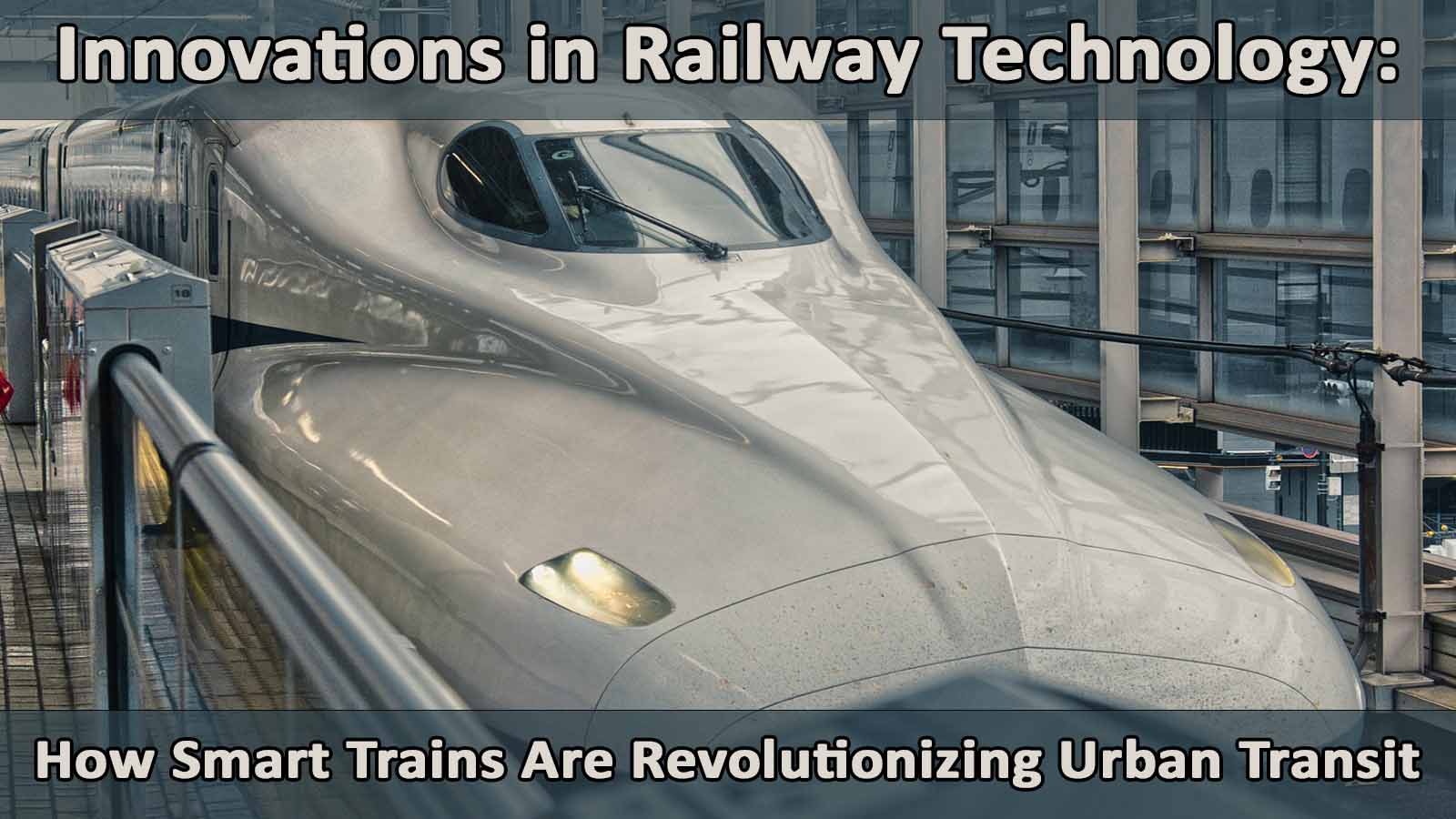Innovations in Railway Technology
How Smart Trains Are Revolutionizing Urban Transit
As cities expand and environmental concerns rise, they offer crucial solutions. Next-generation systems are redefining travel. They are efficient, sustainable, and becoming more autonomous. These systems promise cleaner air, less traffic, and easier journeys. They offer hope in our growing urban world.
This article looks at innovations that are changing urban rail networks and the passenger experience.
1. Autonomous Train Operation
One of the most significant developments in railway technology is autonomous train operation. ATO systems can control trains automatically. They can accelerate, brake, and stop precisely at platforms. The benefits of ATO are many and far-reaching:
– ATO allows for shorter headways between trains. This increases the number of trains that can operate on a line.
– Improved energy efficiency through optimized acceleration and deceleration profiles.
– Enhanced safety by reducing human error and providing consistent performance.
– More consistent journey times lead to improved reliability for passengers.
– Reduced operating costs through optimized staffing levels.
Metro systems in Paris, Barcelona, and Singapore have embraced different levels of automation. The Copenhagen Metro and some Paris Metro lines use autonomous trains.
2. Predictive Maintenance
Smart sensors and IoT technologies enable predictive maintenance for trains and infrastructure. By continuously monitoring the condition of components, railway operators can:
– Detect potential issues before they cause breakdowns, reducing unexpected failures.
– Schedule maintenance more efficiently, optimizing resource allocation.
– Increase the life expectancy of equipment which is cost-effective in the long run.
– Improve safety by ensuring all components are functioning correctly.
For example, the London Underground uses IoT sensors to track escalators. This helps predict failures and reduces downtime. Dutch Railways (NS) operates a system that predicts train maintenance needs. It uses data analytics to foresee component failures. This allows for timely replacements.
3. Energy-Efficient Technologies
Railways are one of the most eco-friendly transport modes. New technology is making them even greener.
– Regenerative braking systems that reuse energy from braking trains reduce energy usage.
– Crafted from lightweight and aerodynamic materials to increase performance whilst reducing energy consumption.
– Solar panels on trains and stations generate clean electricity for onboard systems and station facilities.
– Energy storage systems optimize power usage and smooth out demand on the electrical grid.
– Smart power management systems that optimize energy use based on real-time conditions.
In India, the Delhi Metro uses regenerative brakes to cut energy use by 30%. Meanwhile, all electric trains in the Netherlands run entirely on wind energy. This shows that railways can operate on renewable sources.
4. Improved Passenger Information Systems
Smart trains are enhancing the passenger experience through advanced information systems.
– There are real-time updates on train locations and arrival times. You can access them via smartphone apps and station displays.
– Smartphone apps for personalized trip planning, considering real-time disruptions and passenger preferences.
– Digital signage on platforms and trains for real-time travel information and notifications.
– Onboard Wi-Fi and entertainment systems keep passengers connected and entertained.
– Crowd management systems that show less busy carriages or routes.
For example, Hong Kong’s MTR app offers real-time train updates. This helps passengers plan better. Japanese trains display passenger loads in each carriage. This aids passengers in selecting less crowded cars.
Online platforms mirror railway innovations, evolving to enhance user experiences. Top real money casino sites now guide gaming choices, as better train services do for travel. This move towards easy, detailed information covers online games and travel. It shows a broad aim to empower users and boost satisfaction across sectors.
5. Contactless and Mobile Ticketing
– Contactless and mobile ticketing are speeding up fare collection and passenger flow.
– Contactless bank cards and smartphones for tap-and-go payments cut queues at ticket machines.
– Account-based ticketing systems for seamless multimodal travel. They allow passengers to use different transport modes with one account.
– Automatic fare calculation for the best-value journeys. It ensures passengers always pay the optimal fare.
– Be-in/be-out systems that detect when passengers enter and exit. They end the need for tickets or tapping.
London’s Oyster card and similar systems have transformed public transport payments. Now, in cities like London and New York, passengers can pay using contactless cards or smartphones. This makes the ticketing process simpler.
6. Advanced Safety Systems
New technologies are enhancing safety on railways:
– Platform screen doors prevent falls onto tracks and improve climate control in stations.
– Obstacle detection systems use cameras and sensors to detect objects on tracks and prevent collisions.
– Better train control and collision avoidance systems, like CBTC.
– AI-powered video analytics for detecting security threats and unusual behavior in stations and on trains.
– Advanced fire detection and suppression systems improve safety in tunnels and stations.
For example, all stations in the Copenhagen Metro have platform screen doors. These doors have cut down on accidents and suicides. Meanwhile, the Elizabeth Line in London uses CBTC signaling. It also has advanced obstacle detection systems. This ensures safe and efficient operations.
Conclusion
Smart trains and new railway technologies are improving urban transit. They make it more efficient, sustainable, and friendly for passengers. As these technologies advance and spread, urban mobility will significantly improve. Rail transport will play a key role in making cities smarter and more livable.
The future of urban rail transit is promising. Ongoing research is set to introduce exciting innovations. These include fully autonomous networks and ultra-high-speed intercity links. Railways will remain key to urban transportation in the 21st century.


